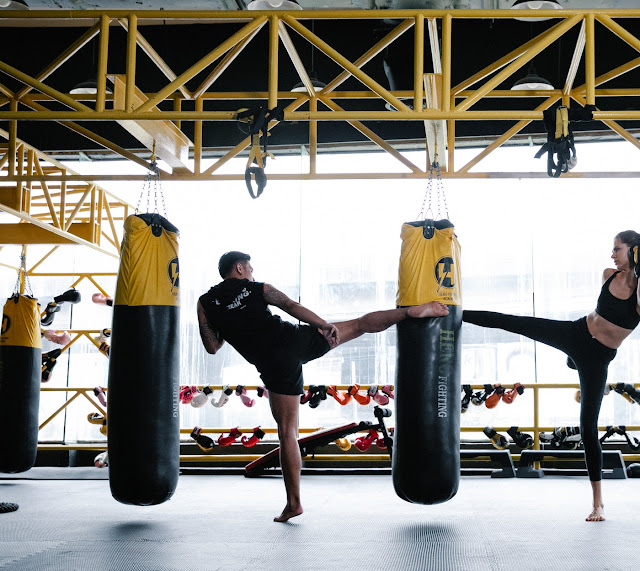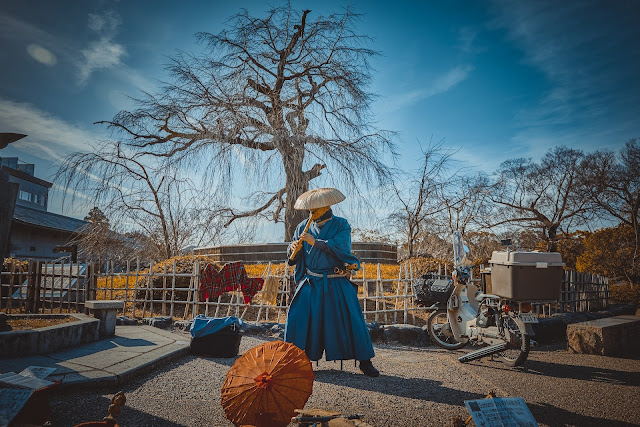What is boxing
Boxing is a combat sport where two people wearing protective gloves throw punches at each other in a boxing ring. The aim is to knock down the opponent, who is also trying to do the same to you. Boxing requires a lot of physical stamina, strength, agility, and reflexes. It's also a popular form of exercise and self-defense.
Boxing history
Boxing has a long and rich history that dates back thousands of years. Here is a brief overview of the history of boxing:
Ancient Times: Boxing can be traced back to ancient civilizations such as Egypt and Greece. The ancient Greeks introduced boxing as an Olympic sport in 688 BC. Boxing at the time involved bare-knuckle fighting and was a brutal and dangerous sport.
Middle Ages: Boxing continued to be practiced throughout the Middle Ages, often in the form of prizefighting where money or other prizes were awarded to the winner.
18th and 19th Centuries: Boxing became more regulated during the 18th and 19th centuries. Rules were established, such as requiring gloves and banning hitting below the belt. Boxing also became more popular as a spectator sport, with large crowds gathering to watch prizefights.
20th Century: Boxing continued to evolve in the 20th century, with the introduction of weight classes and the establishment of governing bodies such as the World Boxing Association and the International Boxing Federation. Boxing also became a more mainstream sport, with many famous boxers such as Muhammad Ali and Mike Tyson gaining widespread fame.
Today, boxing is a widely popular sport and martial art that is practiced by individuals all over the world. It has a rich history that has contributed to its evolution and popularity over the years.
Fitness of boxing
Boxing is a great way to improve your overall fitness. Here are some ways that boxing can benefit your physical fitness:
Aerobic Exercise:
Boxing is an aerobic activity that can provide a great cardio workout. It can help to improve your heart health, increase your lung capacity, and burn calories.
Strength Training:
Boxing requires the use of numerous muscle groups in the body, including the arms, shoulders, core, and legs. By training in boxing, you can improve your overall strength and endurance.
Flexibility:
Boxing involves a lot of movement and stretching, which can help to improve your overall flexibility. Boxers typically stretch before and after their workouts to prevent injury and improve their range of motion.
Coordination:
Boxing involves a lot of footwork and movement around the ring. By practicing these movements, you can improve your coordination and balance.
Mental Health Benefits:
Boxing can also provide mental health benefits, such as reduced stress and anxiety, improved mood, and increased self-confidence.
Overall, boxing is a great way to improve your physical fitness. It offers a full-body workout that can improve your strength, flexibility, and cardiovascular health. By incorporating boxing into your fitness routine, you can become stronger, healthier, and more mentally resilient.
Why Boxing Is Considered A Martial Art"
Boxing is considered a martial art because it involves a set of combat techniques that are used for self-defense or for sport. Martial arts typically involve the use of physical techniques and mental discipline to defend oneself or to attack an opponent. Boxing is a discipline that requires a high level of skill, strategy, and physical fitness, making it a popular martial art for both self-defense and competition. Additionally, boxing has a long history and tradition, with roots dating back to ancient civilizations such as Greece and Rome.
Why People Say Boxing Is Not A Martial Art
While boxing is commonly classified as a martial art, some people may argue that it is not a traditional martial art like karate or taekwondo. This is because boxing mainly focuses on punching techniques, while traditional martial arts typically include a wider range of techniques that involve kicks, strikes, throws, and joint locks. Additionally, some people may argue that boxing lacks the philosophical and spiritual aspects that are often associated with traditional martial arts. However, despite these differences, boxing is still considered a martial art due to its emphasis on physical technique, discipline, and strategic thinking. Ultimately, whether or not boxing is considered a martial art is a matter of interpretation and personal opinion.
Is Boxing Good For Self-Defense?
Boxing can be an excellent form of self-defense. The techniques used in boxing, such as punches, footwork, and head movement, can be highly effective in a self-defense situation. Additionally, boxing training can improve your physical fitness, coordination, and reflexes, which are all important factors in self-defense.
However, it's also worth noting that boxing is a sport with rules and regulations, and real-life self-defense situations may involve different scenarios, such as multiple attackers, attacks from behind, or attacks with weapons. Therefore, it's important to supplement boxing training with other self-defense techniques and strategies, and to always prioritize personal safety and avoidance of dangerous situations when possible.
Boxing fighting
Boxing is a combat sport where two participants, typically wearing gloves, throw punches at each other in a boxing ring for a predetermined amount of time. The goal is to outscore or knock out the opponent within the rules of the sport. Boxers are typically divided by weight classes and compete in amateur or professional circuits. Boxing is a physically challenging sport that requires endurance, strength, speed, and agility.
Boxing strength
Boxing requires a great deal of physical strength, particularly in the upper body, including the arms, shoulders, chest, and back. Strength training is an essential part of a boxer's training regimen, which involves exercises such as weightlifting, resistance band training, and bodyweight exercises like push-ups and pull-ups. These exercises help to build muscular endurance, power, and explosiveness, which are all crucial for delivering powerful punches and avoiding injury during a match. Additionally, a boxer's strength training program may also include exercises that target the legs, core, and cardiovascular system to improve overall physical conditioning.
Boxing speed
Speed is also a crucial component of boxing. A boxer must be quick on their feet to move around the ring, dodge punches, and set up their own offensive strikes. Speed training for boxing involves a variety of exercises like shadowboxing, jumping rope, and footwork drills. These exercises help improve a boxer's agility and coordination, which allows them to move quickly and efficiently. Additionally, boxers may also incorporate speed bag and double-end bag training to improve their hand-eye coordination and hand speed. Speed training is essential for a boxer to be able to react to their opponent's movements and counter effectively.
Boxing agility
Agility is an important attribute that boxers need to have in order to perform well inside the ring. Agility refers to an athlete's ability to change direction quickly and efficiently while maintaining balance and control. Agility training for boxers can involve a variety of drills and exercises to improve footwork, body coordination, and reaction time. Some common agility drills for boxing include cone drills, ladder drills, and jumping drills. These drills help to improve a boxer's ability to move quickly and change direction while maintaining balance and control, which is crucial for evading punches and launching effective counterattacks.
Footwarking
Footwork is an essential aspect of boxing that involves the movement of the feet and the positioning of the body. Proper footwork in boxing allows a boxer to move around the ring, avoid punches, and set up their own offensive strikes. There are various footwork techniques that boxers use, such as circling, pivoting, and shuffling. Boxers also utilize different stances, such as the orthodox stance (left foot forward) or the southpaw stance (right foot forward), depending on their preference. Footwork training for boxing involves a variety of drills and exercises to improve a boxer's balance, coordination, and footspeed. Some common footwork drills for boxing include shadowboxing, ladder drills, cone drills, and skipping rope. By incorporating proper footwork techniques, a boxer can improve their overall movement and positioning inside the ring, which can help them to avoid punches and land effective counterattacks.










.jpeg)

.jpeg)
.jpeg)
.jpeg)
.jpeg)
.jpeg)
.jpeg)
.jpeg)

.jpeg)
.jpeg)

.jpeg)
.jpeg)


























